by Deborah Benhamu
Prior to arriving in Canada, many Syrian refugee children experienced significant disruptions and/or limited access to education. Syrian students also face cultural and language barriers when integrating into the Canadian school system.
As an MA/CSE student, I approached OISE Professor Dr. Esther Geva and together we thought about ways in which to support the children with respect to mathematics – and the language of mathematics.
In the spring of 2017, “Number Buddies” was created to address this need in the Thorncliffe Park community. With the support of Together Project board member, Omar Khan, and a team of volunteers, Number Buddies has now completed its third round of the program.
Number Buddies focuses on introducing students to mathematical vocabulary while engaging in inquiry-based activities. These activities allow students to explore different topics while encouraging mathematical communication through dynamic, collaborative and creative approaches. The ability to communicate mathematically is an important component of a student’s overall mathematics proficiency and academic development (Riccomini et al., 2015). Math vocabulary is closely bound to students’ conceptual understanding of mathematics (Capraro, Capraro, and Rupley, 2010) and research has shown that language is a key component of mathematical success (Seethaler, Fuchs, Star & Bryant, 2011). Giving children opportunities to think mathematically in their first languages is also important (Moschkovich, 1999).
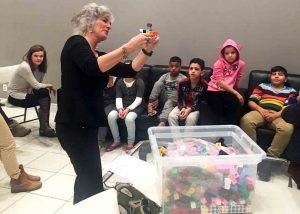
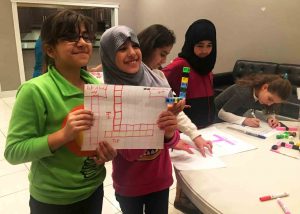
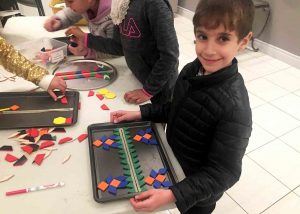
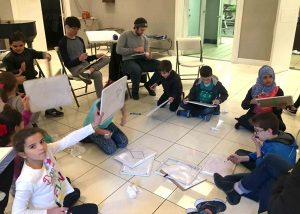
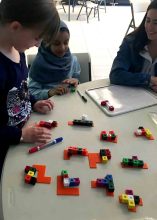
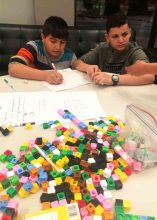
To provide students with a rich and well-rounded program, I approached the The Robertson Program for Inquiry-based Teaching in Math and Science because of their innovative, research-based practices. Program Director Beverly Caswell and Program Coordinator Larisa Lam eagerly supported me – they joined me and the team of volunteers in Thorncliffe Park to lead a variety of playful spatial reasoning activities for the children. Some of the activities they did together included: pattern block symmetry, metris: multiplication + tetris, hole-punch symmetry, a series of quick-image activities (including Can You Draw This?) and perspective taking. Through these activities, students learned spatial language vocabulary while strengthening their spatial reasoning and numerical skills.
While Number Buddies was created to help students improve their numeracy skills, it had an impact beyond academic performance. By the end of the program, students demonstrated improved confidence in and a positive outlook towards math.
